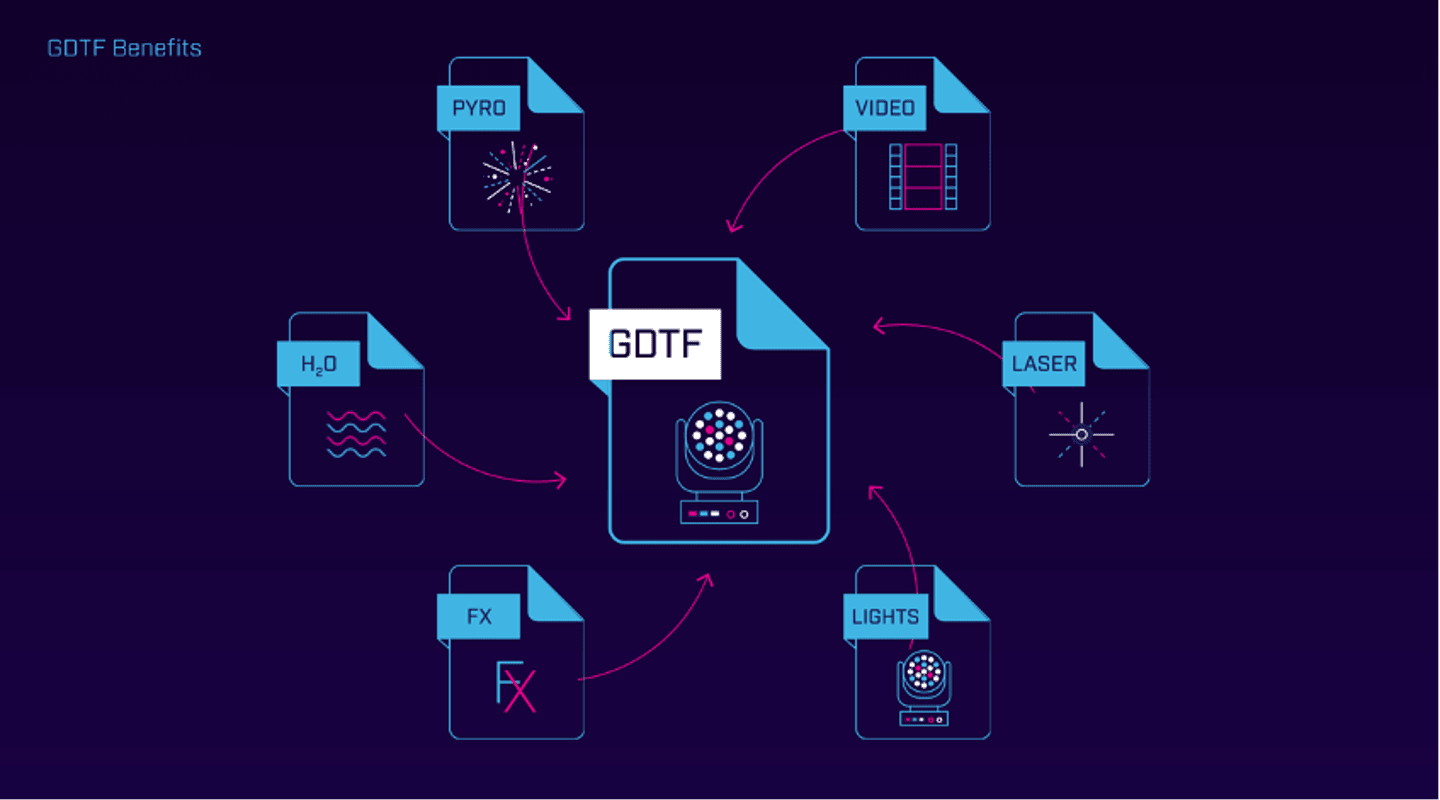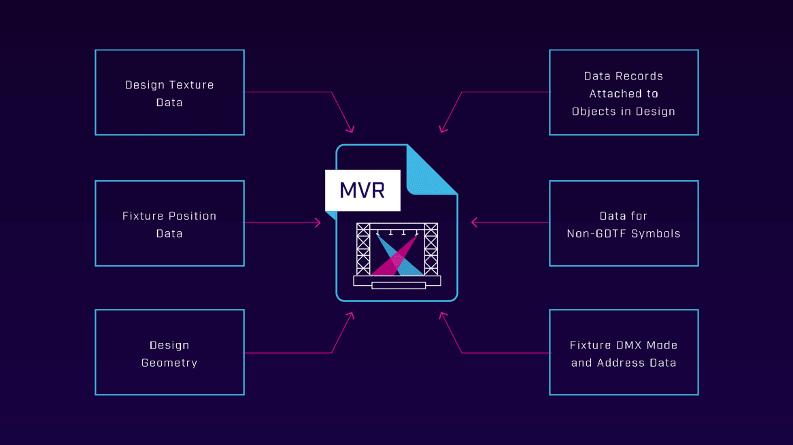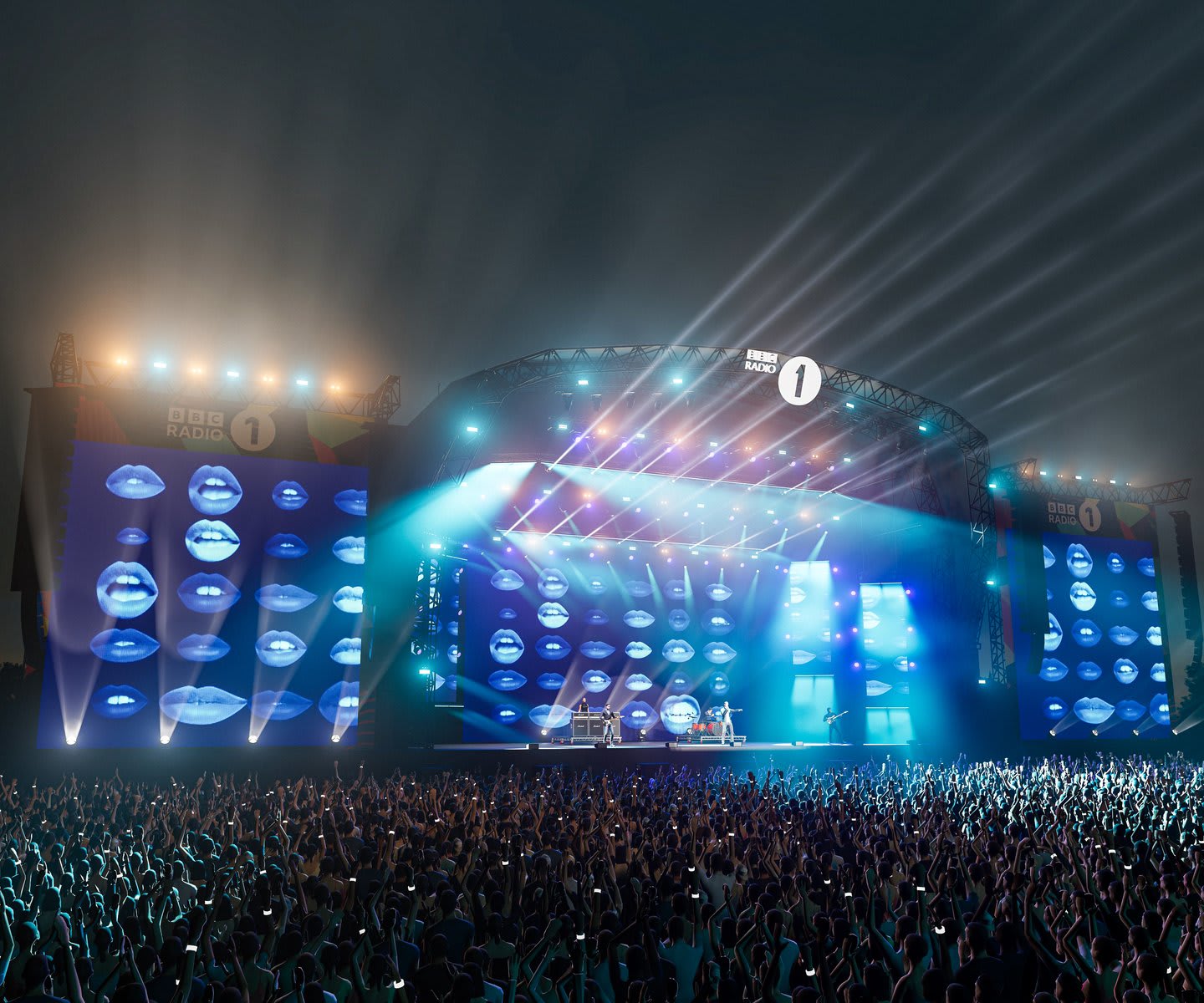
Are you curious about the GDTF and MVR file formats? Are you wondering about how they can revolutionize your design workflows and the entertainment industry?
Keep reading; this is the blog post for you!
Review: What are GDTF and MVR?
Your workflow doesn't end in Vectorworks Spotlight. Instead, you probably move your design to a previz application like Vision for setting up looks and cueing the show. And you're likely moving your design to a lighting console .
For the longest time, however, there was no way to transfer your entire design over to a previz app or control console. Only bits and pieces of information would be transferred — ultimately creating a very inefficient process and more work for you.
GDTF creates an open, common standard for lighting fixtures, media servers, trusses, and more! GDTF files can also inform your software on what a device does, how to control it, what it weighs, and other attributes.

Additionally, your individual GDTF files are packaged together, along with your entire Vectorworks design, to create an MVR file. With MVR, you can easily transfer all the information and geometry of your design to a previz app and a control console.

At Vectorworks, we're proud founding partners of the GDTF and MVR file formats.
How to Get Started Using GDTF and MVR?
Beginning to use the GDTF and MVR file formats isn’t nearly as difficult as you may have expected. Instead, it’s primarily a matter of choosing manufacturers and consoles that support the file formats and making them a part of your workflow.
Follow the steps below so your fixtures work the first time, every time:
- Visit the GDTF-Share page
- Choose your desired GDTF and download it
- Import the GDTF into your Vectorworks file
- In Vectorworks, select the GDTF model from the GDTF model of the lighting device
- Patch the fixture
- Export your MVR file
Currently the ChamSys and GrandMA3 consoles can read and/or export GDTF files.
Using GDTF and MVR for Complex Projects
The most exciting question is this: How will you use the file formats and take advantage of a unified industry?
Ben Inskip, designer of UK-based lighting design firm Siyan, uses MVR to share designs across Spotlight, Depence, and a GrandMA3 console for shows like BBC Radio 1’s Big Weekend and multiple stages for the Reading & Leeds festival.

“It was appealing to say, ‘Alright, I can export this one file and it can go straight into Depence and MA. And, with a few tweaks, I’m up and running pretty quickly,” said Inskip.
Click here to read our full story on Ben Inskip and his modern approach to lighting design.
Want to know what other designers think of these revolutionary file formats? Click the button below to read a story from Vickie Claiborne, author of Media Servers for Lighting Programmers:
Stay in the know with the latest insights
Subscribers receive news, customer stories, success and learning tips, event information, and other important announcements form Vectorworks.
By submitting this form, you agree that Vectorworks, Inc. and its authorized partners may contact you in regards to news, offers, and the use of our software, services, and platforms. Learn more about our privacy practices and your data on our privacy page.*